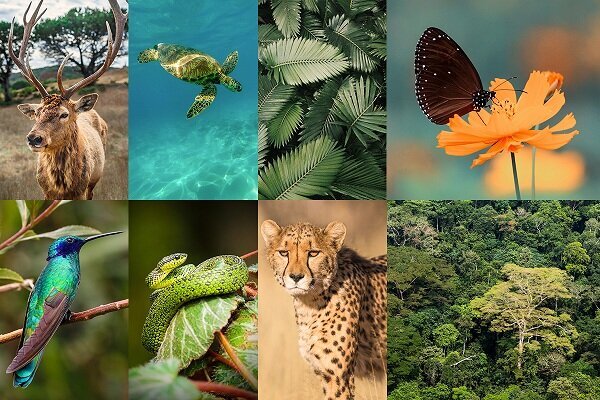DOE drafts comprehensive bill on biodiversity protection

TEHRAN – The Department of Environment (DOE) has drafted a comprehensive bill for the protection of biodiversity to submit to the Majlis (Iranian Parliament), Hassan Akbari, the DOE’s caretaker has stated.
As per the bill, any organization that harms the environment must take responsibility for its action and rehabilitate the damage, in addition to preventing future environmental damages, he explained.
There are 309 areas stretching to 19 million hectares are protected across the country. Some 11.6 million hectares are known as protected areas and 13 million hectares are no-hunting areas.
Unfortunately, we do not have legal tools in the free zones to prevent the destruction of biodiversity, and we can only enter these areas if we receive a report of poaching, agriculture, road construction, and crossing biodiversity transmission lines, he lamented.
However, only 30 percent of the country's biodiversity is located in protected areas, he stated.
One of the most important challenges is climate change, known as the silent death of nature. In the future, a large part of the desert areas of the country will lose their capabilities. On the other hand, we will face forced wildlife migration.
Referring to the condition of leopard habitats, he said that "It is necessary to focus more on the northwest and north, considering climate change, to prepare plans to prevent the loss of leopard biodiversity.
Every year, more than 80,000 species are killed in road crashes, while in the areas that are not protected we do not have the authority to ask the responsible organizations to install a sign on the road sidelines. On the other hand, we are facing the fragmentation of wildlife habitats, which is the product of land-use change, he regretted.
Annually, 1300 to 2000 large mammals such as goats are killed by poaching. Illegal hunting has a huge impact on wildlife populations and is not subject to certain ethics and rules, he said.
Certainly, we will not be able to attract the participation of local communities until we move biodiversity towards income generation, so we need to consider local communities’ benefits, he highlighted.
Special attention should also be paid to the issue of ecotourism and the return of benefits to local communities should be on the agenda, he further emphasized.
Biological diversity protection in Iran
To preserve the existing biodiversity over the wide geographic expanse of Iran, four types of areas have been designated for preservation and protection, including, national parks, wildlife refuges, protected areas, and natural national monuments. In 1997, the DOE held supervision over 7,563,983 hectares of such areas.
Currently, the supervised areas reached about 18.5 million hectares, including, 30 national parks, 170 protected areas, 45 wildlife refuges, and 37 national natural monuments.
Iran has a high diversity of species due to geographical conditions, climatic diversity, huge water resources of the Caspian Sea in the north and the Persian Gulf, and the Sea of Oman in the south.
According to the latest studies, about 1,300 species of vertebrates, including mammals, birds, reptiles, amphibians, and aquatic fish, about 30,000 species of invertebrates, and 8,000 species of plants have been identified in the country.
Unfortunately, over the past two decades, human activities have led to alarming degradation of ecosystems, deletion of genes, species, and biological capabilities; Human threats to biodiversity have accelerated the most over the past 50 years over the entire history of human life.
According to the United Nations, three-quarters of the Earth's environment and about 66 percent of the marine environment have been altered by human activities, and the latest report by the Intergovernmental Science-Policy Platform on Biodiversity and Ecosystem Services (IPBES) states that more than one million species of animals and plants are in danger of extinction.
Therefore, any planning and action in the direction of optimal and principled management of biodiversity protection in the country, interaction and continuous cooperation of responsible bodies, and benefiting from international opportunities and their financial and professional resources can play a very important and key role in maintaining biological diversity alongside sustainable development.
We hope that with the common determination of officials and policymakers, the people, the media, and environmental activists, will preserve and protect this valuable asset for future generations.
FB/MG
Leave a Comment